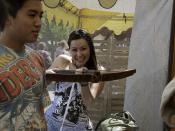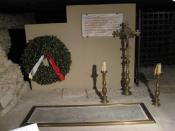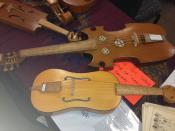The "pioneer generation" of the Renaissance artists was generally considered to be the painter Masaccio, the sculptor Donatello, and the architect Brunelleschi. They applied Humanist thinking to art by using the styles of the classical world, instead of their immediate past, to depict the world around them in a naturalistic manner. The idealized statuary of classical antiquity served as their models, while in architecture the classical orders were applied to Renaissance buildings. They also extended their understanding of light and shadow, of perspective and anatomy.
Masaccio was a key Florentine painter of the early Renaissance whose great work, the frescoes in the Brancacci Chapel of the Church of Santa Maria del Carmine in Florence, remained influential throughout the Renaissance.
He learned about mathematical proportion from his friend Brunelleschi, which was crucial to his revival of the principles of scientific perspective. From Donatello he gained knowledge of the classical styles of art that led him away from the prevailing Gothic style of painting.
He inaugurated a new naturalistic approach to painting that was concerned less with flat surfaces and ornamentation than with simplicity and the illusion of three dimensions.
The fresco series he painted for the Brancacci Chapel in about 1427, illustrates one of his greatest innovations, the use of light to define the human body and its draperies. In these frescoes, rather than bathing his scenes in flat uniform light that was common to most current painting techniques, he painted them as if they were illuminated from a single source of light (in this case, the actual chapel window). This created a unique mix of light and shadow that gave them a natural, realistic quality that was unknown in the art that was produced in his day. He put into practice Brunelleschi's theories about how to project...


